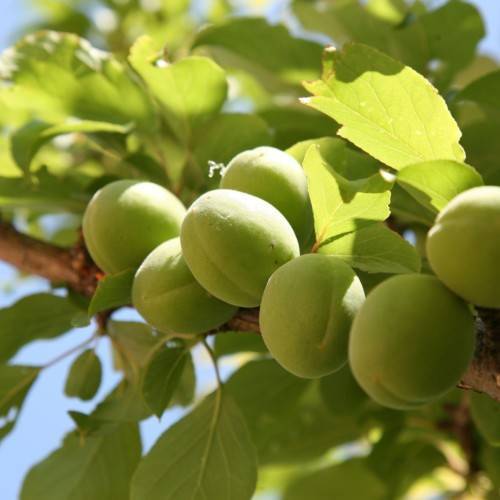
Japanese apricot
Prunus mume 'Fenghou'
Cycle:
Perennial
Watering:
Average
Hardiness Zone:
6 - 9
Flowers:
Flowers
Sun:
Full sun,part shade
Fruits:
Fruits Ready In
Edible:
Yes
Leaf:
Yes
Growth Rate:
High
Maintenance:
Low
Drought Tolerant:
Yes
Care Level:
Medium
watering
Japanese apricot (Prunus mume 'Fenghou') should be watered well but not excessively. Water when the soil is dry 1–2 inches below the surface, and water deeply. This species needs at least 1–2 inches of water per week and more during especially hot and dry periods. For established plants, water deeply every few weeks or when the soil becomes dry. For newly planted trees, water twice as often in the first year.
sunlight
Japanese apricot (Prunus mume 'Fenghou') should be planted in an area with at least 6 hours of direct sunlight per day. It is best to avoid intense afternoon sunlight and instead expose the plants to the morning sun. During late winter/early spring season, the Japanese apricot will require more sunlight (8-9 hours) to help encourage bud setting and reduce the risk of winter damage. Throughout the year, it is important to make sure that the plant is receiving adequate sunlight for optimal growth and fruit production.
pruning
Pruning Japanese apricot (Prunus mume 'Fenghou') should take place in late winter just before the start of spring. The goal is to prune off any dead or damaged branches and to promote a strong structure. In addition, pruning should focus on the interior of the plant to promote better air circulation, remove large branches that cross, or reduce the size of the plant if necessary. Light pruning should be done throughout the year, such as cutting off dead or diseased branches or any shoots that emerge from the trunk. Heavier pruning can be done in late winter when the plant is dormant and should be done sparingly. It should only be done if necessary to maintain a desired size or shape or to remove large branches.
